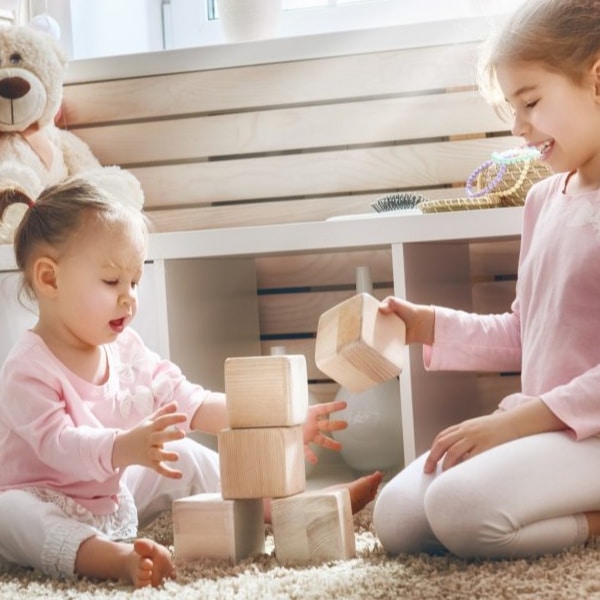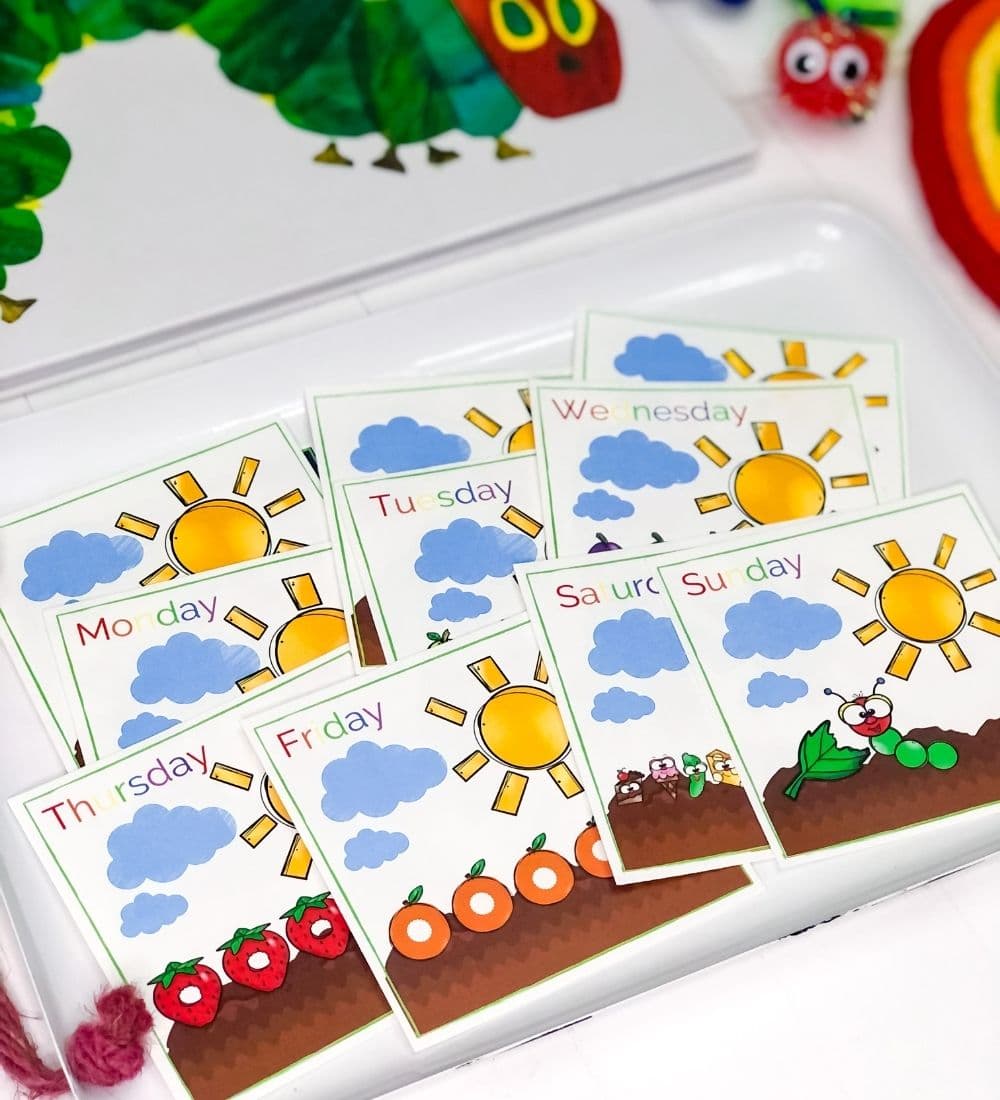purposeful play
Building and Block
Play for Kids
play with purpose
purposeful play
Why is block play so important for kids?
Building and purposeful play with blocks are both an essential part of early childhood development. Children are naturally drawn to blocks and often are capable of staying focused on block play for a significant amount of time.
Purposeful play with blocks (and other open ended materials) gives children the chance to recreate the world they see around them. It also gives children the chance to imagine and build their own unique creations.
Similarly, block play allows for children to safely experiment with cause and effect. In addition, block and building play provides plenty of opportunities for problem solving. Children are encouraged and motivated to think outside the box and to find new ways to put materials together in a meaningful way.
Similarly, children’s fine motor skills and eye-hand coordination improve during block play. These important small muscles strengthen when children carry materials back and forth and carefully place items where they would like them.
Children begin to learn to think abstractly when they recreate what they’ve seen in the world around them – using the building materials that you’ve provided.
Through building and block play, children also learn early math concepts such as shapes, size, weight, numbers and length.
Children will also improve their language skills during building and block play when they describe what and why they’ve built and how they’ve built it.
The benefits of purposeful play with blocks are far-reaching! Below find inspiration and tips on how to incorporate building and block play into your child’s day.
summary of benefits
purposeful play with blocks
- engages imagination
- helps children process and make sense of their world
- sparks creative and abstract thinking
- teaches early math concepts
- improves language skills
- strengthens fine motor skills
- gives children the chance to experiment with cause and effect
- improves problem solving techniques

purposeful play
Building & Block Materials
Encourage complex building projects with a variety of purposeful building materials
wide variety of wooden blocks
hollow blocks
foam blocks
paper or plastic tubes
marbles (if age appropriate)
variety of vehicles
cars, trucks, buses, airplanes, boats
play people and animals
wooden road signs
wooden train set
books about cities, buildings and construction
photos of famous architecture
city floor rug OR large area rug
play furniture
craft sticks
packing materials
boxes
rocks, twigs, shells
paper and writing utensils
tape
string
straws
small balls
imagine
explore
create
Favorite Building Supplies
Below are links to some of my favorite building toys! I’ve used all of these items in either my classroom, at home or both! Many of these items (especially the Marble Run) are my favorite go to gifts for birthdays and holidays. Simply click on the photo to purchase!
purposeful playroom
Organizing
Building and Block Materials
Encourage organized thinking and intricate, purposeful play be keeping building materials organized and easily accessible. Head over to beyond the playroom's Pinterest page and check out our "Organized Toy Shelf" Board for ideas and inspiration.
Be sure when putting out building materials that you keep everything very well organized. Stack all blocks neatly on a shelf or put them all together in a large basket. Keep all other building and block materials organized together in categories.
Example: keep all cars in one basket, trains and train tracks in another, sticks in a separate basket and road signs together in a basket. Label each container with the word and if possible a photo of what the bin contains. (Scroll down for some examples)
The importance of keeping materials organized can not be overstated. When a child walks into an overwhelming, disorganized play-space, where everything is thrown together in one toy box, they immediately lose concentration and focus. A chaotic environment also tends to lead to disruptive and negative behavior.
On the flip side, an organized, easily accessible play-space keeps a child calm and focused during play which will then allow for creative, in-depth, purposeful play!
For more information check out my Step by Step Guide to Designing an Organized, Purposeful Playroom.
simple yet effective ways to
extend your child's learning
There are many ways you can extend children's learning through play. Two simple yet effective ways to extend learning include asking your child questions and making verbal observations.
extend learning
questions and observations
ask questions
Asking your child questions during play is highly valuable!
By asking children questions, you show them that what they are doing is valuable and worthwhile. You give them a chance to verbalize in detail about what they are doing and why. They will get the chance to talk about the structure they’ve built or the project they’ve been working on. Asking questions also improves both a child’s verbal and cognitive skills.
“What would happen if…?”
“What made you decide to add…?”
“How did you figure out how to…?”
“How could you create…?”
“I wonder what would happen if…?”
“Can you tell me me about your building?”
Also try these opened ended statements...
“Tell me about the building you’ve made.”
“Tell me more about the town you’re creating.”
make observations
Make specific verbal observations regarding what your child is building and the actions they are taking. By making these observations you again show your child that what they are doing is important. They learn that the time they are putting into their building is valuable.
Making observations also gives you the chance to introduce new and advanced vocabulary as well as model complex sentence structures.
Making observations is a very effective language skills builder-especially for non-verbal children or children just learning to speak.
Children learn and absorb so much by simply listening to our words.
“I see you’re adding pillars to the side of your building.”
“It looks like you are trying to figure out how to keep your tower from tipping over.”
“It’s so interesting that…”
“You had to be very careful when you were building this skyscraper.”
“I see you used the small blue blocks to make a garage for the truck.”
“You figured out how to build a roof without the building falling over.”
“I see you’re adding road signs to the town you’re building-good thinking.”
take a step back
Though making observations is incredibly valuable, keep in mind that you don’t always have to comment while your child is engaged in play.
Periodically take the time to step back and just watch. See how your child interacts with others. Take note of what sparks their interest. Notice what causes them frustration and how they cope.
If your child is old enough and it’s safe to do so-leave the room for a bit/Give your child space to explore, creat and problem-solve independently.
purposeful play
Stages of Block Play
Like everything else, children go through stages of block play. Much like crawling leads to walking which leads to running. By knowing the stages of building and block play, you will be able to help your child by extending their play in ways that will guide them towards the next stage when they’re ready.
Children love to play with blocks and will be begin exploring blocks by carrying them around, loading them into an empty container or possibly a vehicle. They will transport the blocks and dump them out.
When a child reaches stage 2, they will begin to use blocks to build objects such as towers and roads. They will begin to engage their imagination and use other props such as cars and other vehicles to add details to their building structure.
During stage 3 children begin connecting blocks in order to build bridges and passageways. They are beginning to utilize more creativity and purpose in their play.
By stage 4, children will begin connecting blocks for the purpose of enclosure. They will add other details such as animals, people and other props.
In Stage 5 children will begin using patterns and experimenting with balance and design. They will continue to add more and more details, perhaps naming and labeling their structures.
By this stage children are able to build with great dexterity and skill.
They will build multi-level complex structures using a wide variety of materials. Children will also use lots of props to create the desired effect.
They will become quite engaged in their building and take great pride in their creations. It may take them hours or even days to complete.
They may keep coming back to it to add more details.
Once they are finished they may not want to put it away. Perhaps let them keep it up for awhile if possible or offer to take a photo of their structure to print and display.
"
Play gives children a chance to practice what they are learning
... Mr. Rogers









